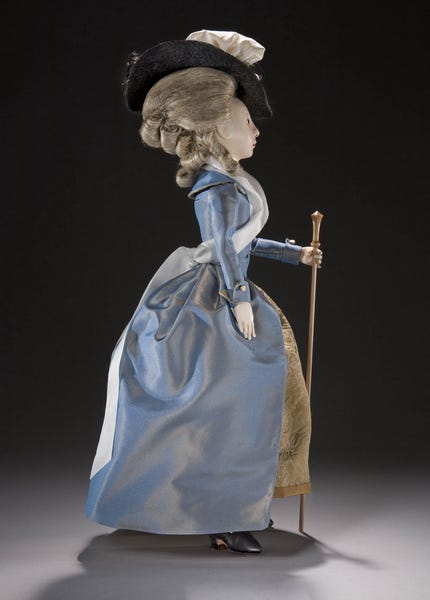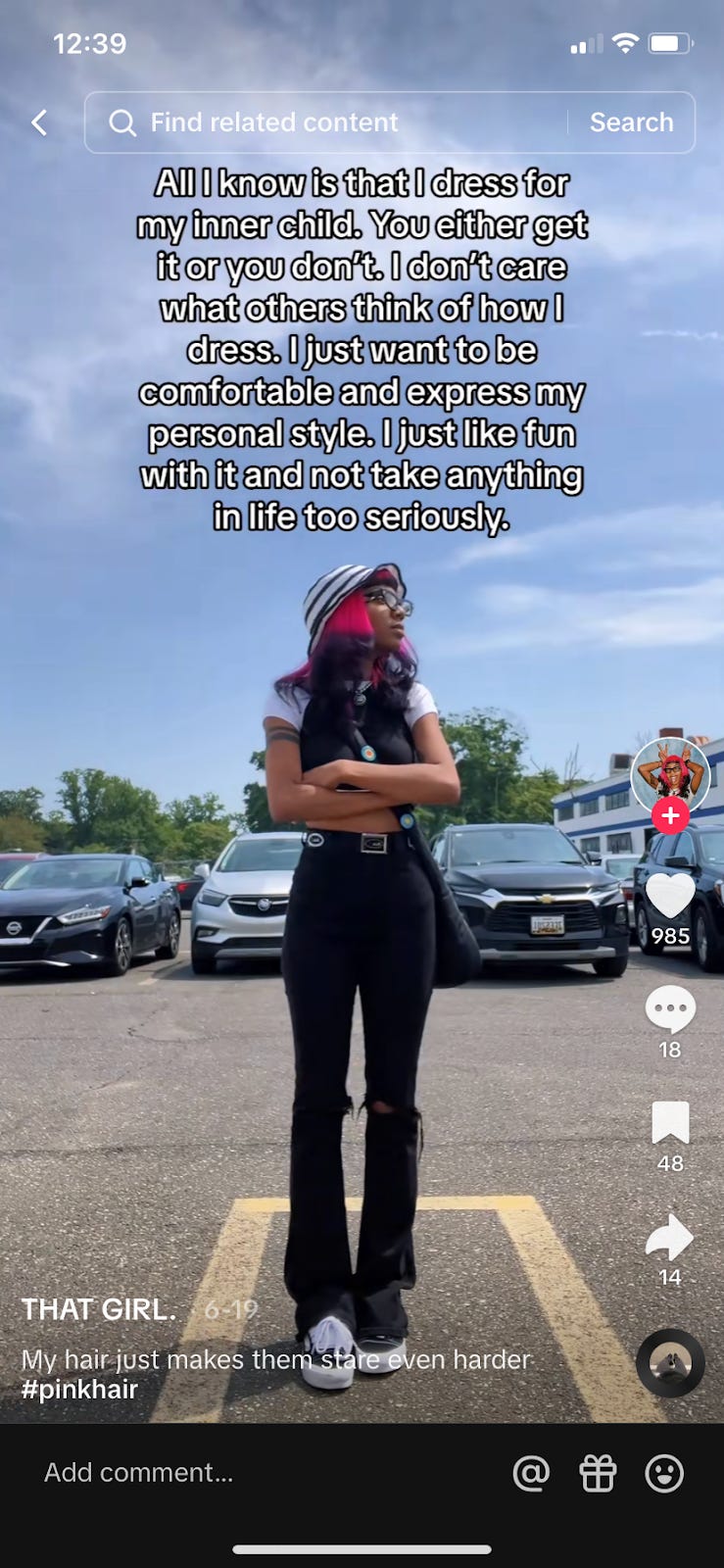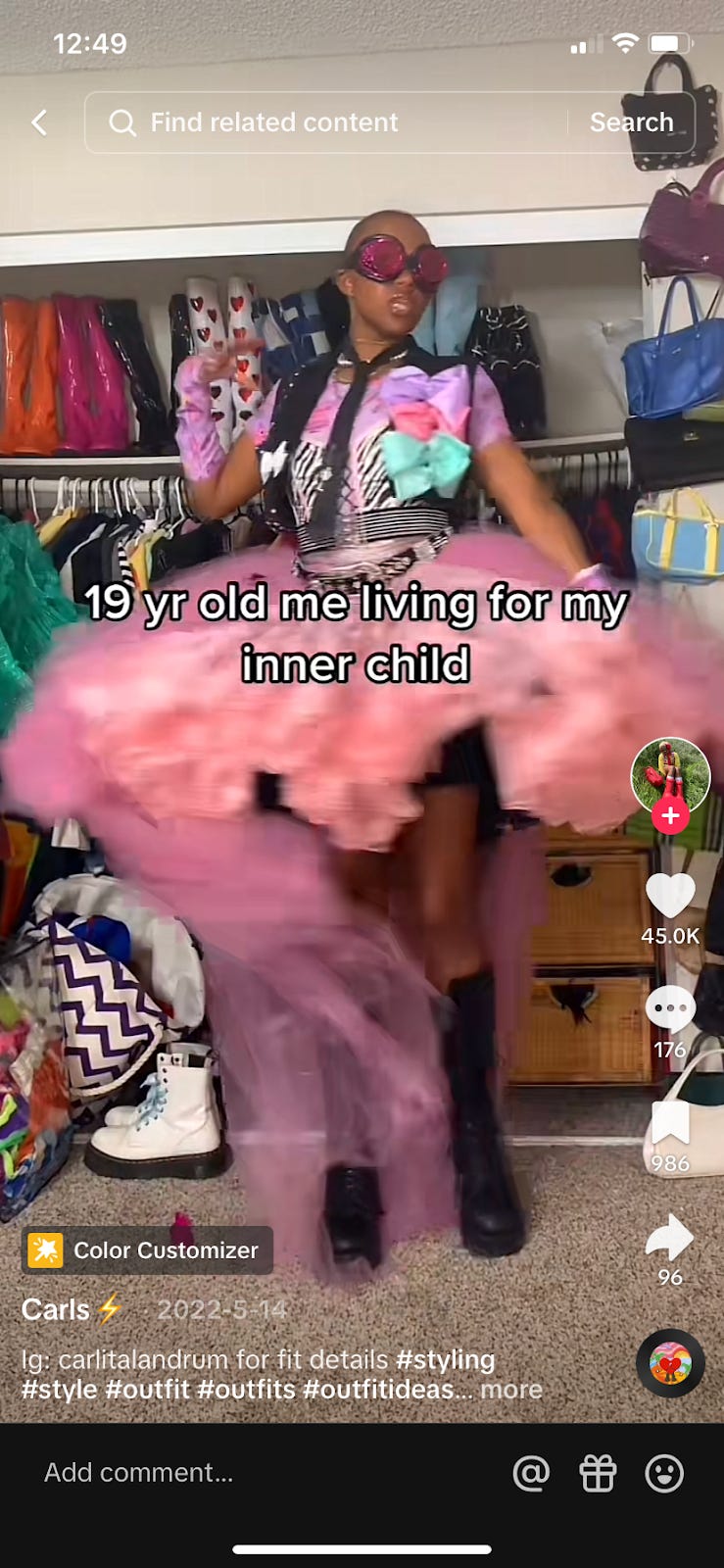The Doll Effect, now what exactly is that?
When scrolling through social media platforms like TikTok and Instagram, you've probably encountered the recent trend of people dressing up like dolls. But why has this trend captured our imagination, and where did it originate?
Lauren Corcoran takes us on an enlightening journey into the intriguing historical connections between doll fashion and the ever-evolving world of style. Through her meticulous examination, she shines a spotlight on how these childhood companions have subconsciously influenced our modern-day fashion choices.
With her discerning eye and comprehensive research, Lauren illustrates how dolls continue to impact the way we dress ourselves and express our individuality.
Let’s unravel the mysteries of this “Doll Effect” with Lauren.
Happy reading,
Amarissa
“Take my hand. Close your eyes. Now, feel.” - Ruth Handler in Barbie.
Dolls are essentially fashion’s training wheels. Back in the day, as we dressed and undressed our dolls, we used spatial reasoning to understand how garments fit and are constructed on the body. When we mixed and matched clothes from different doll sets, we learned how to style and build an ensemble. So while we were having a blast playing with our dolls, we were also building and experimenting with our personal styles and tastes.
Throwing a tantrum because you got a ballerina Barbie and not a Malibu Barbie was actually because you were a style icon in the making, not just in your terrible twos.
The spotlight for this spring and summer fashion season has been completely eclipsed by the doll aesthetic. Without mentioning the giant pink elephant in the room that is Barbie, our other forever faves such as Bratz and Monster High have dominated Pinterest boards, Tik-Tok trends, brand collaborations, and even fashion on the runway. Beneath the facade of dolls just being a trendy motif, I believe their collective relevancy stems from a growing change in how we style and dress ourselves. Combining that with Mattel's fresh and formidable business strategy, as well as social media’s algorithmic favoritism towards doll hobbyist content, you’ve got what I dub “The Doll Effect”.
Doll Fever
The Barbie movie has officially crossed the 1 Billion dollar mark in international box office revenue. Not only has it achieved tremendous commercial success, but it has also earned acclaim for its artistic merits, setting new records in the process. The emergence of Barbie, alongside the subsequent surge in Barbenheimer summer trends, appears to signal a revitalization of Pop Culture in various respects.
The blonde icon has effectively inspired the general public to embrace pink-colored, Barbie-inspired ensembles. More than just influencing people’s clothing choices, Barbie has managed to orchestrate a collective sense of excitement and pride for wearing hyper-feminine outfits when putting together an outing to see the movie. This phenomenon has become almost as ingrained as a holiday of sorts. We have been seeing post after post on Instagram of our friends and mutuals wearing all pink to the theaters.
“What movie are you seeing?... Oppenheimer, obviously!”
The Barbie hype is the culmination of years of dolls subtly seeping into prevailing trends. Styles like chunky boots, mini skirts, butterfly baby tees, and cargo pants (all staples of Bratz dolls) evolved into some of the hottest trends of 2020 and 2021. Notably, the #MonsterHigh hashtag has generated over 11 billion TikTok views, igniting a revival of girly gothic, whimsigothic, and dark academia aesthetics. Before the release of the Barbie movie, Mattel actually re-launched the Monster High series with a new generation, the introduction of "Haunt-Couture," a line of legacy dolls designed for collectors and devoted fans.
Another contributing factor to the increased popularization of dolls is the content generated by enthusiasts, collectors, and artists within the doll hobbyist and artist community on social media. Given the algorithms' preference for human facial content, doll enthusiast content has managed to bypass certain filters and land on the "explore" and "for you" pages of users who typically wouldn't interact with such niche subjects. Creators and artists like Pidgin Doll gained viral recognition due to his incredible doll illustrations and skillful crafting of custom dolls.
A testament to his skill, in April of this year Ice Spice and Nicki Minaj collaborated with Pidgin Doll to create doll versions of themselves which were used as promotion for the “Princess Diana” remix. They were also featured in the music video.
Nostalgia plays a major role in the hype. However, dolls have always had an incredibly rich and relevant history within the realms of fashion and trends. Let's take a step back in time to see how we got here.
The World’s First Supermodel (Who Just So Happened to Be a Doll)
Since ancient times, dolls have been used as the primary way to display fashion garments. As early as the 14th century, dolls were exchanged between nobles and royalty as gifts, and a means to display fashions without using copious amounts of expensive fabric. Dolls were some of the most exquisite and expensive luxury items, not intended for children who would usually play with dolls made of straw and other cheap scraps. Charles V of Spain was known to send dolls adorned in the finest Italian fashions to his ladies in waiting. Dolls were displays of wealth, power, and opulence.
As France emerged as the epicenter of the fashion world, dolls became ideal models for showcasing designs prior to purchase. These dolls were given the nickname “Pandoras” and were adorned in proper stays, stockings, and fancy garments all produced at a smaller, doll-sized scale. They enabled both the noble customers and designers themselves to see the outfit in a 3D space before fabricating at full size. Displayed in boutiques and fashion houses all across Europe, dolls were integral to the production and distribution of fashion prior to the Industrial Revolution.
As fashion became more accessible to the masses, and print began to dominate the fashion sphere, the dolls were still used for displays well past the 19th century. Wealthy French women usually had one or two of them in their walk-in closets.
Dolls are the foundation of fashion itself. You could even consider fashion sketches to be akin to paper dolls: an aspirational image that's not to scale, but is the first building block in the design process.
Dolls: Our Fashion Foundations
Fashion is not exactly accessible to children. Unless you’re North West or Jojo Siwa, what you wear is usually dictated by mommy or Target’s Cat & Jack kids aisle. Your exposure might be limited to glimpses of red carpet events on TV or idle gazes at Cosmo Magazine covers in the grocery store, but those aren't fashions for you. They're designed for celebrities, supermodels, and adults who assign a greater value to their clothing.
However, within the realm of dolls, fashion revolves around you as the most important client. It’s a world where you can finally experiment with clothes, unrestricted and uninhibited. In Doll Fashion, boundaries don’t exist. Nothing is too ostentatious, too colorful, or too gaudy. If Coco Chanel told the citizens of BarbieLand to “look in the mirror and take one thing off” before leaving their Dream Houses, she’d be effectively and swiftly deported back to reality.
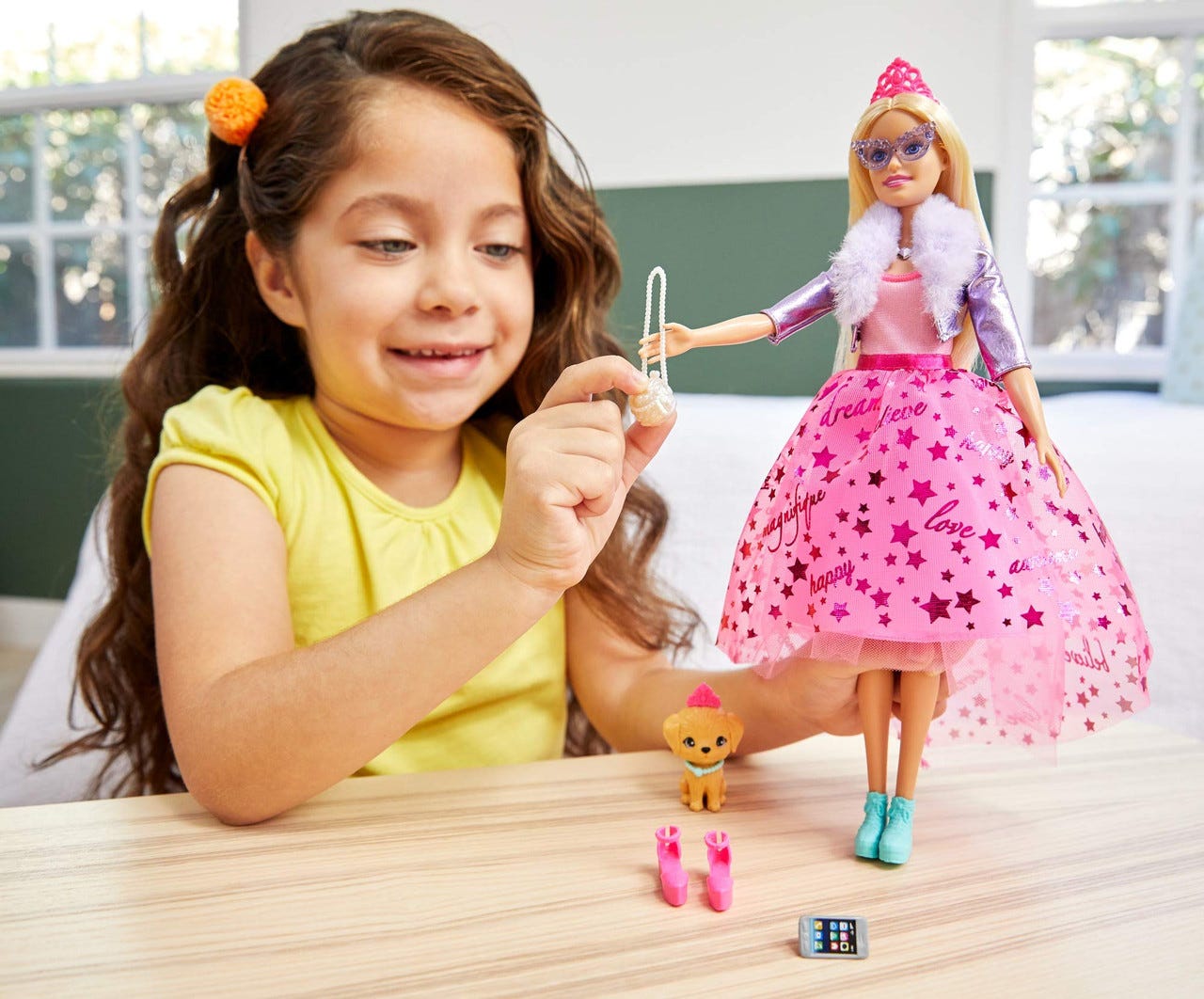
It's easy to conflate dolls as simply fantastical princesses, mermaids, or fairies forever adorned with cheap glittery fabric— toys that inherently have less value than traditional fashion design. However, fashion dolls have always been on the cusp of trends, consistently embodying the quintessence of style by accentuating the fundamental attributes of the particular aesthetic at hand.
These doll series not only capture the essence of the subcultures they aim to depict but also serve as prime examples of what renders those styles so distinct and iconic. Take Francine, Barbie’s “Mod’ern” cousin, for instance. Perfectly fashion-forward for her era, decked out in Carnaby-style shift dresses, mini skirts, and groovy psychedelic patterns. Donning perpetual upturned hair bumps on each side of her Patty Boyd-inspired visage, Francine offered a taste of British fashion to American children during the 60s. Years later, collections like “Bratz: Pretty in Punk” would go on to introduce even more contemporary British styles throughout the 2000s.
Winklepicker boots, Vivienne-inspired layered skirts, dyed hair, chains, and a healthy amount of tartan scream Punk from a mile away. These dolls weren’t just honoring the fashions they were referencing, they were also a conceptual framework for what defined the subcultures in the first place.
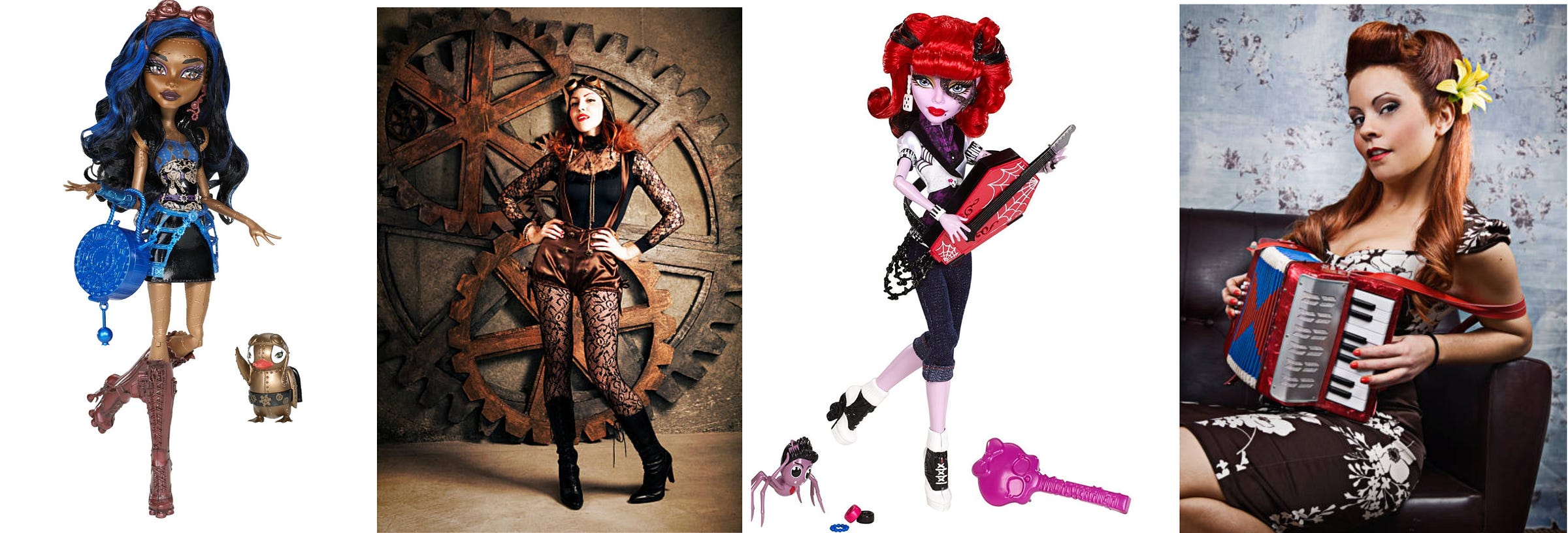
My first introduction to fashion subculture was through dolls from Mattel’s Monster High brand. Operetta, the southern banjo-slinging daughter of the Phantom of the Opera was designed to honor 50s inspired Rockabilly fashion. Robecca Steam, a robot created by a Victorian mad scientist, is an homage to Steampunk. Originally a science fiction movement, Steampunk is defined by a blend of Victorian style with grungy mechanical motifs like gears, goggles, and steam-powered machinery. Through these characters, Monster High ignited my personal intrigue in the fashion subculture and inspired me to learn more about them.
The designers who create these dolls work tirelessly to ensure that the children who play with them feel inspired, empowered, and learn something new. Dolls have been keeping up with trends for decades and encapsulating trends and subcultures, almost archivally, for generations of children to discover and experiment with.
Dressing Our Inner Child
Dolls provided us with the initial platform to delve into the fundamentals of design, material choices, silhouettes, and trends, using tools that pay homage to real-world fashions, yet embrace a touch of extravagance without hesitation.
It makes sense that this playful and conceptual approach to fashion and styling is summoned back after Covid and the emergence of “Dopamine Dressing”. Now, people want to dress how they want, wherever they want, just because it makes them happy. TikTok has encouraged us to be our own “Main Character” and wear that Selkie dress that's been sitting in the back of our closet to the grocery store, or sport low-rise jeans without a flat tummy to live out our Lindsay Lohan fantasy. As we re-examine our relationship with fashion, the playful nature of dressing our dolls comes flooding right back to us.
There is an uptick in nostalgic fashion for Gen Z, even more so compared to other generations. It's a known fact that the fashion cycle will always take us back to the past. “90s does 70s” , “70s does 40s”, etc. However, the pendulum is swinging back harder and faster than ever. Y2K was a behemoth in itself, but lately, Gen Z has been looking to trends that were popular not even a decade prior. Whether that's finding inspiration from Bella Swan’s layered tunics and boot-cut jeans or reviving the 2014 Tumblr style complete with American Apparel skirts and chokers, people are prioritizing what makes them happy. It's dressing like how your childhood self would have wanted you to, even if it appears dated, gaudy, or childish.
“Dressing my inner child” is a trend that's gaining a lot of traction on TikTok. In a video by @Kaleidoty on the topic, Ty says “I don’t care what others think of how I dress, I just want to be comfortable and express my personal style”.
We also love creators like @carlita_elizibeth and @aliyahsinterlude who embrace their inner child with over-the-top, girly ensembles complete with tulle tutus and high platforms.
Another TikTok from a seamstress and cosplayer, @raineemery, shares a sewing project where she recreated her childhood princess dress inspired by Barbie: The Princess and the Pauper recounting how “It's hard to describe the magic this dress had for me for so long. I wanted to translate that over into my own design.”
TikTok’s Hyper-specific, Highly Conceptual, Doll-Like Styling
Before TikTok, the most common way that you’d find style and outfit inspiration was either from celebrity paparazzi photos, worn in a stiffly posed photo, or images of clothing lovingly displayed on the floor (usually coupled with a yellow tinted Vsco filter).
So much has changed with how we style our outfits since the popularity of fashion video content on TikTok. Long gone are the static images of outfits intentionally laid out on the floor. Instead, we film a “Get ready with me”, or a “fit check” where we infuse fun into sharing our personal style. Punctuated by commentary, fun transitional shots, and most importantly ourselves, these videos have an underlining light-heartedness. We post our process of building an outfit as opposed to just having the perfect ensemble planned out as if it appeared out of thin air. Some creators even use turntables and treadmills to simulate walking or to show an outfit from all angles while rotating. We’re finding new ways to display ourselves. Dressing up has become a ritual that is meant to be fun and experimental again.
Another thread between TikTok styling trends and dolls is the constant new aesthetics and “core-ification” of fashion on social media. Micro-trends have become hyper-specific enough that they’re indicative of a costume that can be swapped once something else takes its place. Similarly, dolls are constantly adapting, rebooting, and remaking themselves to appeal to the next child who will only be a customer for as long as they’re young.
“Outfits inspired by ___” is another popular trend where creators display ensembles using clothes already in their closet to emulate, evoke, or pay homage to something. Usually, it's something very niche or specific. Creators like @sophie.seddon have created viral styling videos inspired by the Sun and Moon, Coraline, and Disney’s Pixie Hollow. Other creators like @ageminifairy use found garments to make dreamy gowns inspired by nostalgia media, such as My Little Pony. The trend is so popular that niche, borderline parody looks like @cmulo’s “Outfits inspired by Papa’s Pizzeria customers”— a flash game from the early 2000s— have also blown up in views and adoration.
All of this mirrors the doll phenomenon, as dolls themselves stretch the confines of fashion by delving into distinct categories to attain highly specific aesthetics. Much like doll fashion, our personal styles showcased on social media have shed their solemnity. We're embracing a readiness to venture into the unknown, test out new ideas, and discard any trepidation about embracing a touch of the unconventional.
The Doll Effect
I don’t exclusively credit the Barbie movie for the stylistic, social, and cultural shift towards embracing dolls. Undoubtedly, the movie has had a huge impact on trends and is likely to linger in the zeitgeist for some time. However, I believe that what propelled the movie to resonate so deeply with us is more than just Barbie herself, but rather an emerging Doll Renaissance that has been taking root right under our noses.
Dolls teach us that it’s okay to be extra, to heal your inner child, and to experiment with fashion. Embracing what dolls meant to us back then and infusing that into how we dress and style ourselves today is a step towards liberation in an art form with so much judgment and conformity.
The Doll Effect is our transformation into becoming our own dress-up dolls. We’re adopting a more whimsical and playful perspective and opening ourselves up to joy.
Final oversight & edits by Amarissa.
Today’s writer…
Lauren is a participant in Fashion Talk's Summer 23 Student Writing Program. Aligned with our mission to uplift young voices in the fashion industry, we’re excited to share her fresh and insightful perspective with our community.
Get to know Lauren here.








